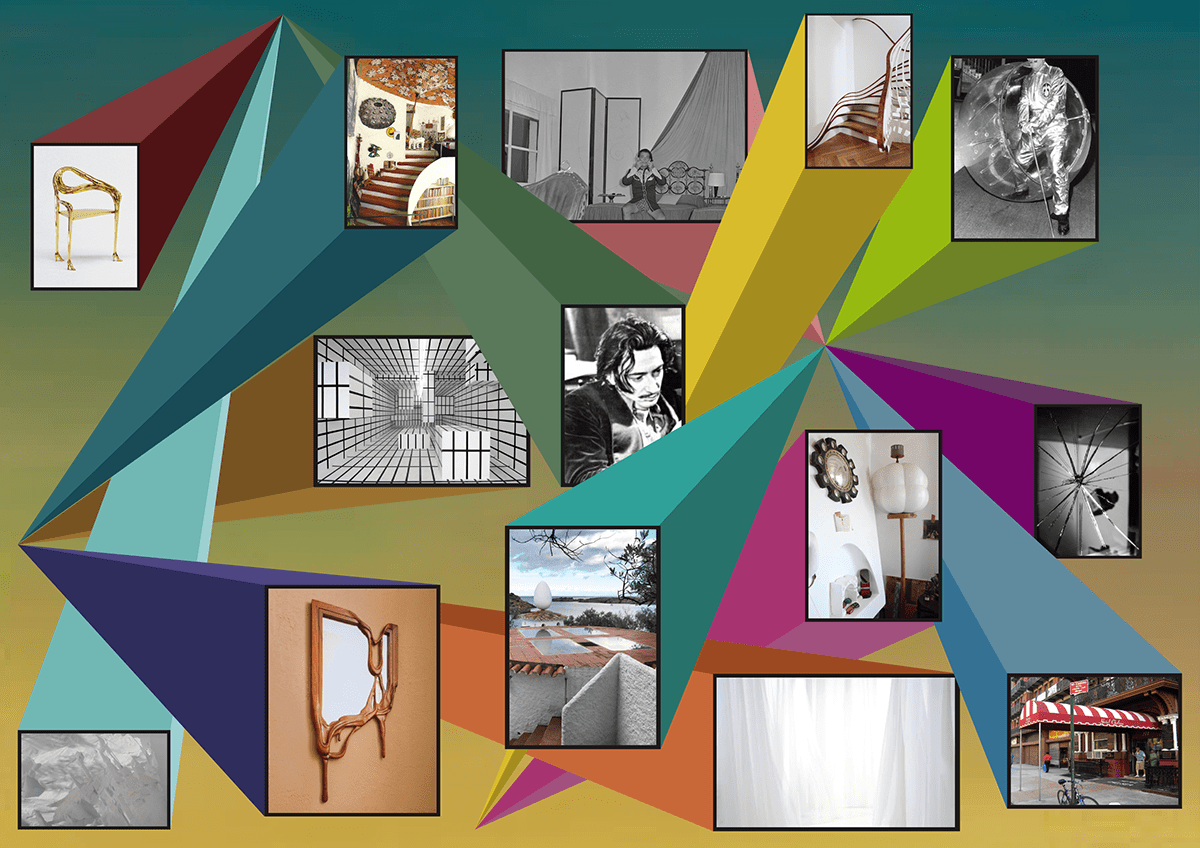Project Storyline:
It was the summer of 1965 when Salvador Dalì and Andy Warhol met for the very first time. During Dalì’s annual visit to the states, he would always stay at the St. Regis in New York in Suite 1610. Dalì’s antics at the St. Regis were legendary and would startle guests every now and then. One night Dalì had an encounter with Warhol at the hotel and urged him to come visit his suite. He was being his eccentric self by blaring opera music and posing funnily for the photographer. Warhol was so overwhelmed by the experience of socialising with the surrealist legend that he was gulping wine glass after glass to calm his nerves; Warhol for once was left speechless and starstruck. Due to Warhols fascination and admiration towards Dalì, he would often spend time with him, even if that meant getting tied to a spinning wheel with paint splattering all over him.
When Dalì returned to New York in April 1966, he starred in Warhol’s short documentary “Salvador Dalí” alongside Nico and a few others. The film features Dalí meeting the rock band The Velvet Underground. On set, Nico and Warhol got talking about shooting something at Chelsea Hotel. Dalì being Dalì, he was curious to know what the project was all about which is when Warhol explained the rudimentary idea he had in mind. Despite all the public discomfort Warhol felt around Dalì, he offered Dalì to come to The Chelsea with him. Upon reaching the location in September 1966, Dalì was fascinated by the space and variety of personalities living there.
Stanley Bard, the manager at the time was ecstatic that Dalì was interested in renting a place to use as a studio at The Chelsea. Dalì had a reputation for flair and flamboyance which would have publicised The Chelsea and even have a higher potential of income. Little did he know Dalì had devised an ingenious method for not paying his bills. He was a clever man who knew how to take advantage of his publicity and fame; he would make drawings on the back of his cheques and autograph them. It sure was a good deal for Dalì because most of his cheques never came back to the bank to be cashed. Why would anyone let go of an original, signed Salvador Dalì?
Dalì returned within a few days to look for a space for his new studio. He was a collaborative artist and looked forward to his time at the Chelsea which is why he was in search of a larger room. He worked with assistants, artisans, craftsmen, photographers and anyone else he was intrigued by.
While Stanley toured Dalì around Hotel Chelsea, Dalì mentioned that the high ceilings, thick walls and good Northern light is what attracted him most to The Chelsea. He said it was something that he missed at The Regis when it was time for him to concentrate and work. Stanley learnt from his father that “artists needs to feel good in their environment” and the reason that many people stayed in the building is the building itself.
After finally finding the perfect room, it didn’t take long for Dalì to shift his entire studio equipment from The Regis to The Chelsea. Within only a few days, Dalì's display of eccentricity became the talk of The Chelsea. He was a relentlessly self-promoting artist and would do anything to have all eyes on him - he was seen pacing up and down the central staircase in his underwear, letting his pet ocelot ‘Babou’ loose and what not… Stanley Bard on the other hand began to second guess his impression of Dalì’s personality, keeping aside the fact that he was a legendary artist. Nonetheless, Stanley fostered the habit of cooperation, tolerance and willingness to accommodate all guests regardless of their lifestyle, background and popularity. It was David Bard who taught and guided him to “provide a nurturing atmosphere” at The Chelsea.
During Dalì’s stay at the Chelsea, he interacted with people like Charles James - a famous fashion designer who was also a friend of Andy Warhol, Arnold Weinstein and Larry Rivers. However, he spend most of his time working in his studio. Dalì would isolate himself for days in order to keep his hallucinations and creative juices flowing. However, this was quite alarming for everyone considering the things that went down at the Chelsea on a regular basis.
Since Dalí had decided to dedicate his time to create the Teatro-Museo Dalí (Dalí Theatre-Museum) in his home town of Figueres, he realised he would no longer require a Studio space at Hotel Chelsea. Dalì used the studio until March and then left for Catalonia. Stanley was baffled by the news but looked forward to meeting Dalí again in the winter. To everyones surprise, Dalì left Stanley some of his works that he created at the Chelsea as a gesture of goodwill and compensation for avoiding his rent.
By the end of Dalí’s 6 month stay at the Chelsea, he left the space looking less like an apartment and more like a legacy of his revolutionary works.
Moodboards:



Conceptual Space:








